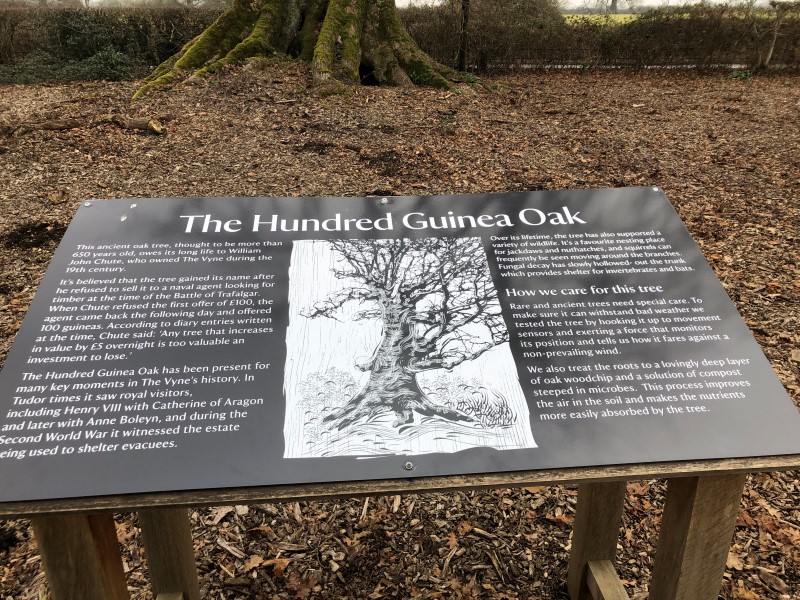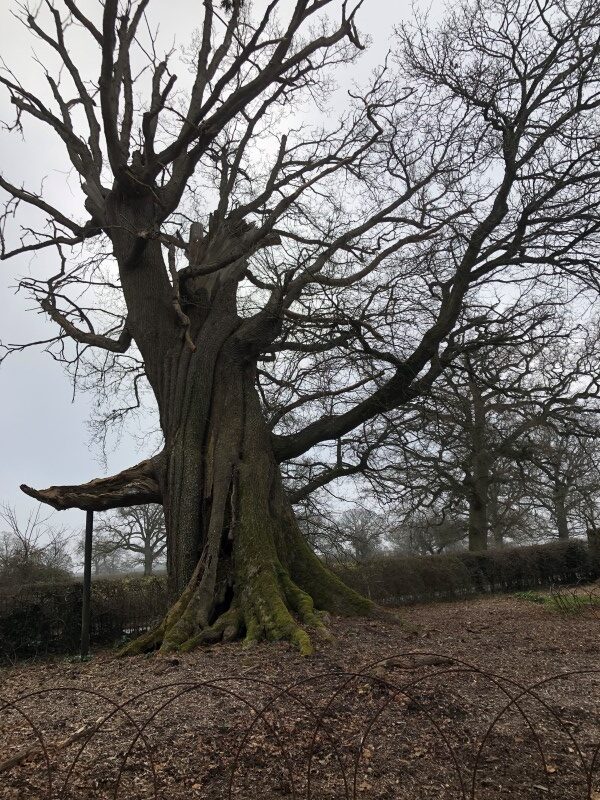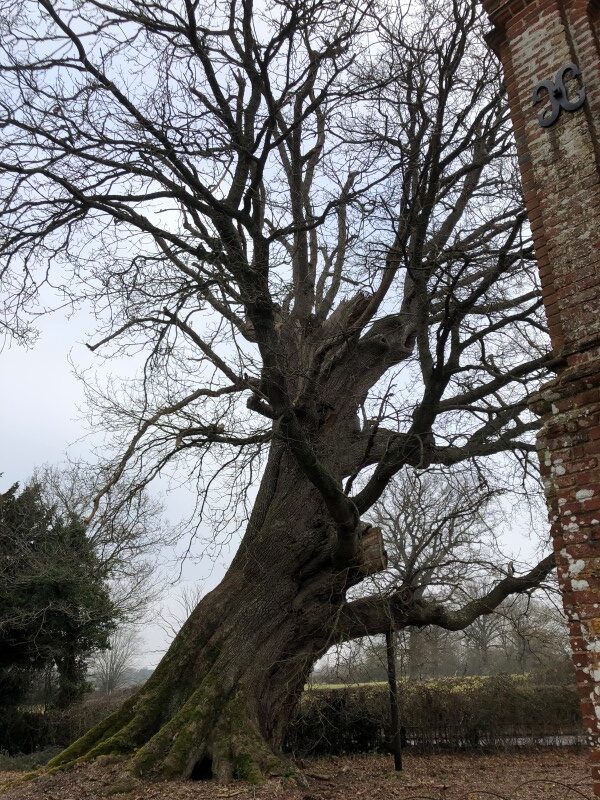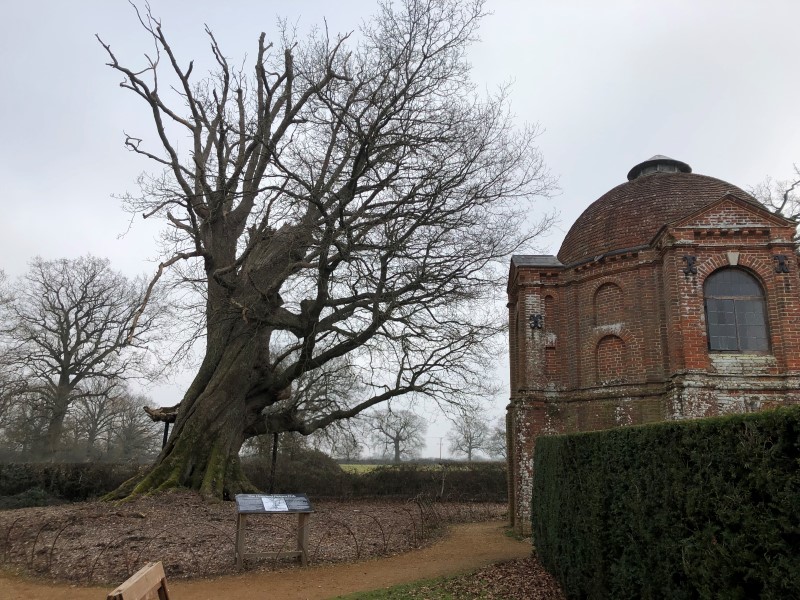“This ancient oak tree, thought to be more than 650 years old, owes its long life to William John Chute, who opened The Vyne during the 19th Century.
It’s believed that the tree gained its name after he refused to sell it to a naval agent looking for timber at the time of the Battle of Trafalgar. When Chute refused the first offer of £100, the agent returned the following day and offered one hundred guineas*. According to diary entries written at the time, Chute said “any tree that increases in value by £5 overnight is too valuable an investment to lose”.
The hundred guinea oak has been present for many key moments in The Vyne’s history. In Tudor times, it saw royal visitors, including Hendry VIII with Catherine of Aragon, and later with Anne Boleyn. And during the Second World War, it witnessed the Estate being used to shelter evacuees.
Over its lifetime, the tree has also supported a variety of wildlife. It’s a favourite resting place for jackdaws and nuthatches. and squirrels can frequently be seen moving around the branches.
Fungal decay has slowly hollowed out the trunk which provides shelter for invertebrates and bats.
How we care for the tree: Rare and ancient trees need special care. To make sure it can withstand bad weather, we tested the tree by hooking it up to movement sensors and exerting a force that monitors its position and tells us how it fares against a non-prevailing wind.
We also treat the roots to a lovingly deep layer of oak wood chip and a solution of compost steeped in microbes. This process improves the air in the soil and makes the nutrients more easily absorbed by the tree”
(taken from the information board in front of the tree)
*A guinea was worth £1,1s (one pound and one shilling). This is the same as £1.05 in modern money, and to this day guineas are used to sell horses.
Very approximately, £100 in 1850 is equivalent in purchasing power to just over £17,000 today.




